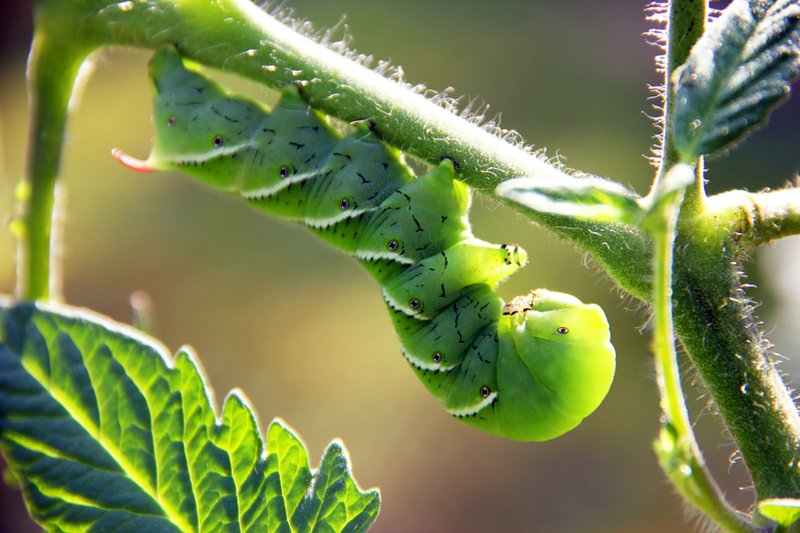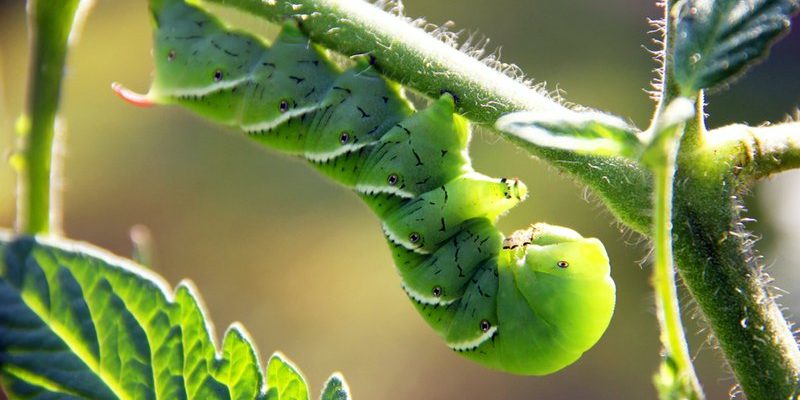
So, are these green munchers harmful to all vegetable plants? Honestly, it depends. In this article, we’ll break down what hornworms really are, which plants they target, and how to manage them if they invade your garden. Think of it as a guide to helping you keep your green thumb intact, all while maintaining the balance of nature around your veggies.
What Are Hornworms?
Hornworms are the larval stage of certain moths, most commonly the Five-Spotted Hawk Moth (for Tomato Hornworms) and the Carolina Sphinx Moth (for Tobacco Hornworms). These critters are often large, green, and can grow up to 4 inches long, making them look almost like tiny, resilient dragonflies. Despite their somewhat endearing appearance, hornworms are voracious eaters that can wreak havoc in a short amount of time.
These pests have a distinctive horn-like structure on their tail, which gives them their name. While they may resemble little green giants, they can decimate your plants. When you think about it, they’re like the unruly teenagers of the garden—full of energy and always on the lookout for something to munch on.
Which Vegetable Plants Do Hornworms Target?
You might be wondering which of your beloved vegetable plants are at risk. The short answer is: Tomatoes and peppers. Hornworms are particularly fond of these plants, but they can also cause trouble for other members of the nightshade family.
Here’s a quick list of plants that hornworms typically prefer:
- Tomatoes
- Peppers
- Eggplants
- Tobacco
- Potatoes
While they often target these veggies, they can sometimes munch on other garden plants if food is scarce. So, if you have a mixed garden, there’s a chance they could explore other plants. Keeping an eye out for signs of their presence is essential, as early detection can save your crops.
How Hornworms Cause Damage
Hornworms can cause extensive damage to your plants in a freakishly short amount of time. In the beginning, they might not seem like much—just a few nibbles on the leaves. But in just a couple of days, these little green guys can decimate entire branches, leaving you with leafless stalks and nothing but shredded remains.
Their powerful mandibles can chew through leaves, stems, and even fruits, which means your harvest could take a serious hit. If you’ve ever gone to pick a juicy tomato only to find it half-eaten by a hornworm, you know how frustrating this can be. The damage isn’t just unsightly; it can also lead to disease entering the plant through those open wounds.
Signs of Hornworm Infestation
If you suspect hornworms are lurking in your garden, there are a few telltale signs to look for. Honestly, these pests can be hard to spot, especially with their green color blending in with the leaves. But don’t worry; here’s what to keep an eye out for:
1. Chewed Leaves: This is the most obvious sign. If you see large, jagged holes munched into your leaves, it’s time to investigate.
2. Droppings: Hornworms leave behind small, dark green or black droppings that can be found on the ground beneath your plants. If you see tiny “pellets,” it’s a good indication that you’ve got hornworms in the area.
3. Missing Foliage: If parts of your plants look like they’ve been shorn, it’s likely hornworms are the culprits.
To spot them more easily, check underneath the leaves or along the stems, as hornworms tend to hide during the day.
How to Control Hornworms
Controlling hornworms can feel daunting, but with a little effort, you can protect your garden. Here are some solid strategies to get you started:
1. Handpicking: If you’re up for it, this is one of the easiest and most environmentally friendly methods. Just check your plants regularly, especially the undersides of leaves, and remove any hornworms you find. Drop them into a bucket of soapy water to eliminate them.
2. Natural Predators: Encourage beneficial insects like ladybugs and parasitic wasps to visit your garden. They can help keep hornworm populations in check.
3. Insecticidal Soap: If the infestation gets out of hand, consider using insecticidal soap or a neem oil spray. These are effective and less harmful to beneficial insects.
By integrating these methods, you can create a balanced approach to hornworm management in your vegetable garden.
Are Hornworms Beneficial in Any Way?
You might find it surprising, but hornworms aren’t all bad. While they can certainly wreak havoc on your garden, they also play a role in the ecosystem. When they become moths, they serve as essential pollinators. Yep, those pesky little pests can help fertilize flowers!
Moreover, their presence can indicate that your garden is a thriving environment, attracting various insects. As with many aspects of nature, finding balance is key. So, while it’s essential to manage them, remember that they contribute to the bigger picture.
In summary, hornworms can indeed be harmful to specific vegetable plants, especially tomatoes and peppers. However, with a little vigilance and the right control methods, you can keep their munching habits in check. Think of managing hornworms as a dance between keeping your plants safe and allowing nature to take its course. After all, your garden is a living ecosystem, and maintaining that balance is crucial for a healthy, productive harvest.
By staying aware and taking action when needed, you can enjoy a flourishing garden without too much hornworm hassle. So, grab your gardening gloves and get to work—your plants will thank you!

